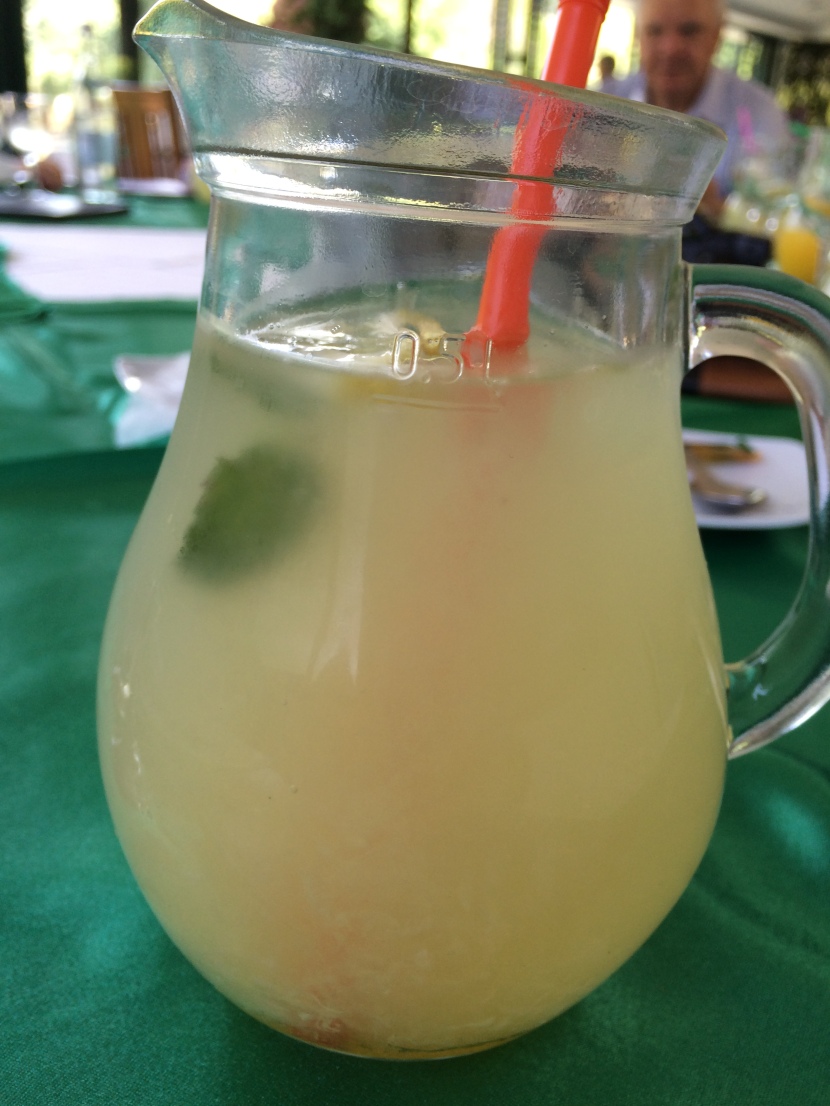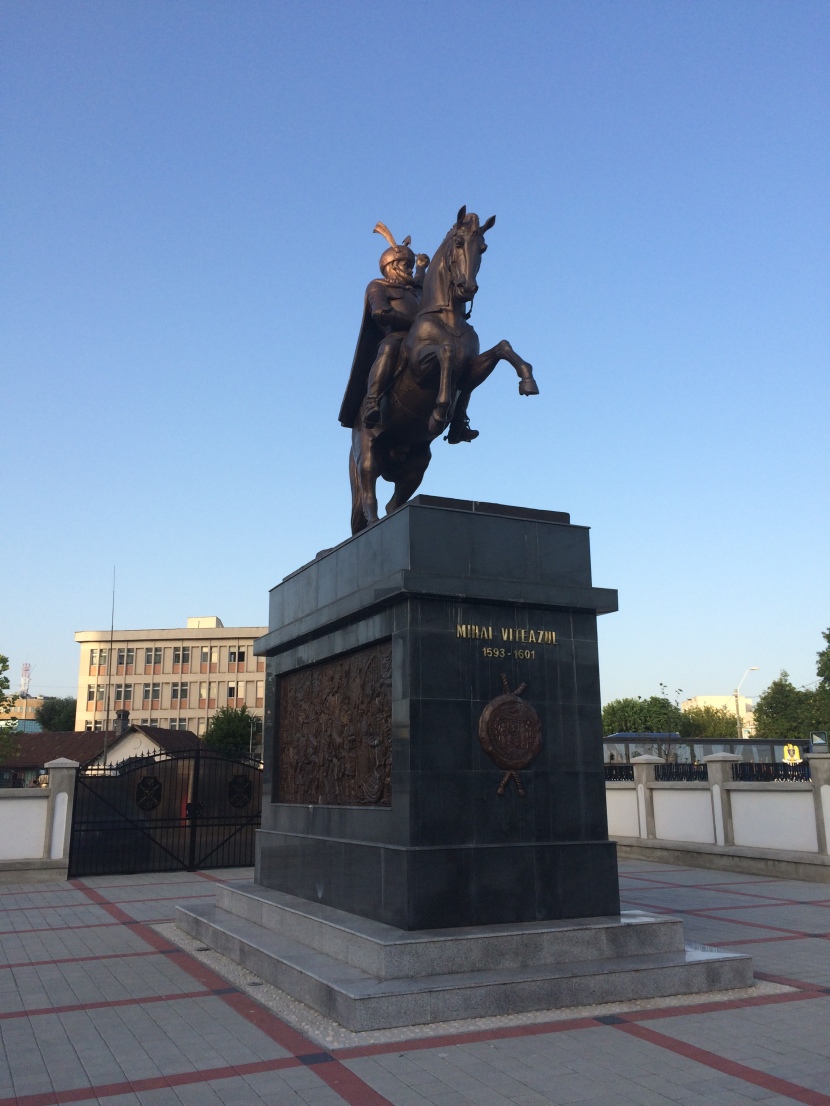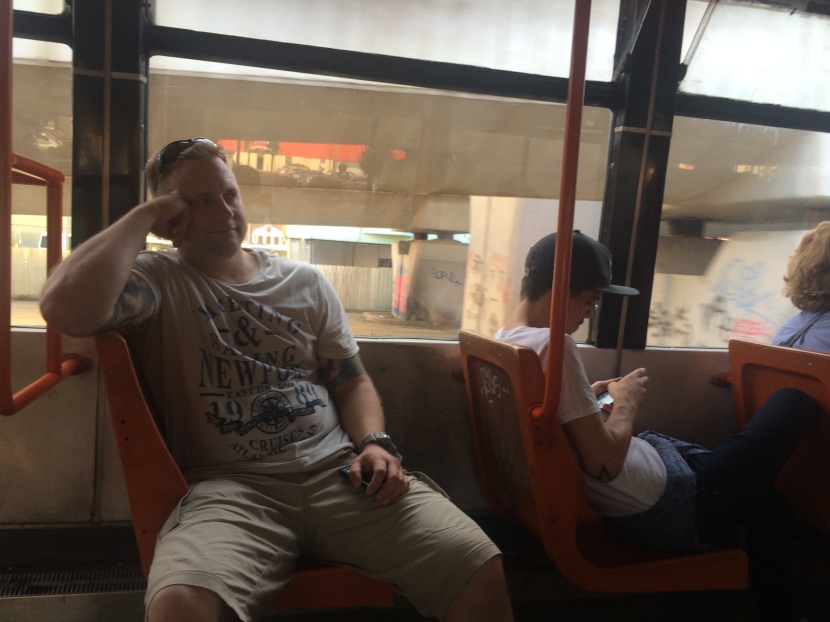Tagged: blogging

6/9/18 Kauffman Stadium
Have you ever dreamed of trotting up a set of stairs out of a dugout onto a Major League Baseball field? I have. Ever since I was a youngster, and attended my very first Major League game in the Kingdome in 1989, I dreamed of being a Major League Baseball player. Maybe it was lack of effort, or lack of support, or maybe I didn’t dream big enough or pursue my dreams hard enough. It never happened. Now I’m a thirty-something, die-hard baseball fan. I’ve played some organized scrimmage games of baseball with friends, and occasionally throw the ball around with buddies from work. That’s as close to the action as I’ll ever get.
Nowadays, when I go to baseball games, I’m generally the first one in when the gates open. I always bring my glove, and I patrol the outfield bleachers waiting on my chance to catch a batting practice home run ball. I scavenge the foul areas looking for any baseballs missed by stadium employees, and I almost always get my ticket signed by any baseball player willing to sign it. I’m a baseball fanatic, I’ll admit. I love the game. I read the box scores nightly, and I’m a statistics nerd. It’s my passion to connect myself to such a wonderful sport. Over the years, I have amassed quite a collection. I have one of Dustin Ackley’s batting gloves, I have nearly 400 (375 to be exact) Major League Baseballs that I have caught at over 150 live MLB games (including a foul ball caught at the Oakland Colliseum) I have over 25 autographed tickets, I have countless bobbleheads, three signed baseball bats, (Eric Davis, Miguel Olivo and Jay Buhner) and many, many autographed baseballs. Plus, I have a wide collection of specially used commemorative Major League baseballs.
I’ve always considered myself decent at playing baseball. Once you step onto a Major League Field, and try to invest yourself in what some of these baseball players do day in and day out, you’ll find that your average, soft bodied baseball ego is nothing but sub-par. It takes an incredible skill to be able to hit the way some of these top hitters have crushed their way into the record books. It takes dedication, a premium work ethic to be able to pitch the way some of these athletes have pitched. The conditioning, the work outs, the drive and the sheer dedication to succeed just to make it to the Big Leagues is harder than you think.
The Kansas City Royals were gracious enough to allow a small group of eager fans like me to get out on to the field and partake in some batting practice. It was surreal. We met up with a small group of Kansas City Royals former players; Jamie Quirk, Dennis Leonard, Al Fitzmorris, Jerry Terrell, Greg Pryor, Les Norman, Shawn Sedlacek and John Mayberry in the Diamond Club suites. All this was set up by Mrs. Dina Blevins (Manager of Media Relations and Royals Alumni). We received a briefing and introduction of what to expect for the next four hours of our lives and then we were brought out onto the field through the Royals dugout.
From the bleachers, the field looks small. From the field, the field is enormous. I got to walk down the warning track out to right field with Al Fitzmorris as he told me a quick story of his playing days. He told me how his trainer (back in the day) use to run them from foul pole to foul pole. It doesn’t seem that far. When the Royals trainer came out and started to warm us up, he had us pick up a light jog from right field to left field. I decided to run it out. It’s actually pretty far. After our light warm-up, we paired up and took to the foul line in shallow right field and played catch for about ten minutes just like the Big League pitchers do before every game. After that, the first group lined up around the batting cage.
I jogged out to left field to shag some baseballs. Most of the hits barely made it out of the infield. We were a sorry bunch of amateurs in that batting cage. Some guys were able to smack some flares that would probably count for singles in a real game but most hits were swallowed up by the batting cage. I ran for just about everything, and I soon found out that the field is more than huge. It was massive. I sprinted after a line drive hit towards the corner, and as I was approaching the ball I thought I might have a chance to catch it. It seemed like I would run forever and still come up short. I soon learned that either A) I would somehow have to get faster or B) learn to read the ball off the bat sooner. That’s a skill I never acquired, and it is essential to running down well hit baseballs. Outfielders spend countless hours studying other players, watching videos, reading scouting reports, watching the pitch and watching the batters’ swing. Having all that knowledge on top of knowing where to stand and having great speed will bring you great success to running down line drives into the outfield. By the end of the day in the outfield, I had managed to remember who hits what and where, and I was able to make one running catch at Kauffman Stadium. It felt awesome to make that running catch. I looked up to the empty seats pretending I had just caught an inning ending catch and the crowd was cheering me on.
I finally slapped on a batting helmet, grabbed some lumber, and dug in inside the batting cage. I used a Jorge Soler bat to take my cuts. Al Fitzmorris was tossing BP to my group. The first pitch thrown to me, I made good contact and sent a short flare to left field. The next few were either fouled off or completely missed. I made excellent contact on the sixth pitch that boosted my confidence. I got a couple good compliments from Les Norman who was standing behind the cage giving pointers. The eighth pitch I fouled off. The ninth pitch was in on my hands but I drilled it out of the infield, and the tenth pitch I absolutely crushed it. And by “crushed it” I mean it landed about 15 feet shy of the warning track. I could feel how well I connected with the bat which prompted me to watch it fly which further prompted me to strut out of the batting cage like I had just taken Fitzmorris deep into the Royals bullpen. Such was not the case, though, and Les Norman rightfully put me in check:
“Hey, Fitzy! Did he just watch that one?” Norman yelled.
“Yeah, I think he did!” I started laughing as Fitzmorris and Norman ribbed me over my showboating. I was proud of myself. I hit that ball farther than expected, and it felt good to crush a baseball like that on a Major League level. Fitzmorris and Norman made it fun. They joked with us, told us stories and they really made it a special day. To have played as long as some of these guys have, to retire and still come back to the stadium to hangout with some fans was very commendable, and to me, it meant the world.
After taking some cuts in the cage, I trotted to the infield where Jerry Terrell and Shawn Sedlacek were hitting infield fungos. Fielding grounders looks like the easiest thing to do as a professional baseball player. I am here to tell you that it is not. It is probably the most difficult thing to master. Not to just master it but make it look easy. I tried to field the baseball my way. The way I have seen Major Leaguers do it for years. My fielding percentage was around 20%. I missed a lot and bobbled a lot of grounders. Jerry Terrell gave us pointers and brought us back to the basics and my fielding percentage climbed to about 60%. Still not good enough to be a pro player.
After failing miserably in the infield, I joined a small group who were busy taking fly ball fungos from Jamie Quirk. He would smack those baseballs with the fungo bat farther than most of us could hit out of the cage. He hit them over our heads, we’d chase them down, and try to throw the ball back to him. From center field to right field was quite a distance. After about three throws, my elbow started to hurt. The trick to fielding a fly ball is to turn away from the ball and run back a few paces until you get a good read on where the ball is projected to land. The wind started to pick up considerably so that impacted the trajectory quite a bit. Jamie Quirk was good, though. He could smack that ball with the fungo bat and drop the ball directly into your glove without you taking one step forward or one step back. It was incredible.
I have major respect for baseball players. These guys are tremendous athletes. When I’m at baseball games, I routinely hear from fans (mainly the drunk ones) that baseball players just “stand around a lot” and aren’t very physically active. These four hours on the field at Kauffman with the Royals alumni proved those statements to be very false. I already knew it took a lot to make it to the Big Show but after spending some time on the field shagging fly balls, taking grounders and getting a few cuts inside the cage, I understood that it takes a lifetime of determination, dedication, countless hours of work and there is constant failure looming over their heads. It is not an easy task to make it to the Big Leagues, and it’s an even harder task to stay in the Big Leagues. These guys have sacrificed a lot to make it to the pros, and that is truly defining what it means to gut it out. Thank you to the Alumni for being available to us dreamers of being on The Stage, a special thanks to Mrs. Dina Blevins for making this happen and a big thank you to the Royals organization, the grounds crew on hand and the trainers for taking care of us while we played Major Leaguer for a few hours. It was pretty cool.

5/16/2018 Safeco Field
One day ago Robinson Cano was suspended from playing baseball for 80 games. A few of my followers on Twitter claim to have not been surprised by the recent news. New reports have surfaced saying the Yankees declined to re-sign Cano because they may have known he was using steroids. Perhaps the most surprising news (for me anyway) is that Cano was not exactly suspended because of testing positive for steroids. He was suspended for testing positive for using Furosemide, a diuretic sometimes used to hide the presence of other banned substances. Cano stated that he had taken the drug inadvertently and noted it was not a performance-enhancing drug. Major League Baseball does not care.
“I would never do anything to cheat the game I love”, Cano said in a statement. Players are commonly labeled “cheaters” by fans after testing positive for anything on the banned substance list. It doesn’t even have to be a steroid. Cano has already started his 80 game suspension and he will do some of it while on the disabled list (fracture finger). His tentative return date is August 14th. He is also ineligible for the All-Star game and can not play during the postseason (these rules were implemented in 2014). Cano joins the long list of players who’ve tested positive for banned substances including current Mariners Nelson Cruz and Dee Gordon. Some notable former Mariners who’ve tested positive are: Michael Morse, Jesus Montero, Ryan Franklin and Mike Cameron.
I think Cano is getting a raw deal. 80 games plus forfeiture of pay along with no All-Star game or postseason? I think that’s ridiculous. The average fan knows so little about steroids. Somehow taking steroids makes players increase their hand-eye coordination so they can swing the bat perfectly to record a hit. Steroids, of course, makes players stronger and faster but in no way do they increase skill. Steroids are not a magical pill where a player can inject steroids and all of a sudden become this super player. It takes hard work, dedication and discipline. Players who use steroids often spend more time in the gym, they eat healthier and work harder then players who are not using. Steroids basically assist with the recovery process so muscle groups can be worked out more frequently. This helps build bigger muscles in a shorter amount of time. Dee Gordon was taking testosterone and Clostebol, which helped reduce the amount of estrogen in his body as well as helped increase his testosterone levels. It gives athletes a slight “edge” as it’s a mild form of steroid and leaves minimal traces in the urine. Testosterone helped increase strength and for Dee Gordon that is essential on the base paths. But that doesn’t discount the amount work he has to do to gain that strength.
If you’re interested in learning more about steroids, and how they benefit athletes you can always watch this documentary called Bigger, Stronger, Faster. It’s the tell-all regarding steroids, the side affects, and how many sports athletes have been using them for decades. Steroids are obviously a taboo but being naive about them is ludicrous. Educating yourself on steroids will certainly open your eyes and get you to understand them a little better. You don’t have to change your opinion about them; if you hate them you hate them. If you think players are “cheaters” then so be it. I’m not here to try and change your mind. But if we dive deep into the heart of baseball and dissect the late 90’s (The Steroid Era) you have to admit that steroids saved baseball. The 1994 strike flat lined the sport, it decimated attendance and if it weren’t for Sammy Sosa, Mark McGwire, Jose Canseco and countless other players who used and slugged home runs, where would baseball be today? The war on steroids is pointless.
My last point and then I’ll wrap this blog entry up. Athletes are trying to go the distance in a sports career. The average Major League Baseball career is roughly 5.6 years. A player has about an 11% chance of continuing on from his first year in baseball. Those odds are heavily stacked against him. These guys are fathers, husbands, sons, etc. They have families and bills and mortgages just like the rest of us. They are trying to compete in one of the most fiercest profession there is in the history of the human race. If you put yourself in their shoes, they are only trying to get the edge up on the next guy. They are only trying to stay competitive to continue their career. There is nothing dishonorable about that. Look at your own life and really think about all the short cuts you’ve thought about taking or all the times you’ve tried to get a leg up on your classmates or coworkers to earn the next promotion or score higher on a test. You’ll see that you and me and all these ball players are all one in the same. We are trying to survive the inevitable. But i digress.
This was the second time I saw Bartolo Colon pitch. And he pitched a gem. 7.2 scoreless innings at the age of 44. I couldn’t believe my eyes. The last time I watched Colon pitch was in 2012 when I went and saw the Mariners and the Athletics play in Japan. The Rangers were able to beat the Mariners by a score of 5-1. Typical of the Mariners to have sleepy bats until the 9th inning. Kyle Seager bashed a home run in the bottom of the 9th but it was all too late to start a rally by then. The Rangers had their number from the start. Colon was locked in and if it weren’t for the miscue at home plate, it would’ve been a solid 2-1 win Texas. That is all from Safeco Field.
Final: Texas Rangers 5 Seattle Mariners 1
Total Lifetime Games Attended: 139
Total Baseballs Snagged This Season: 16
Total Lifetime Baseballs Snagged: 374
Total Lifetime Foul Balls Snagged: 1
Total Lifetime Home Run Balls Snagged: 0
7/2/2016 Stei, Romania (Day #11)
We spent the day in Stei, and we headed to Oradea to get on the train. Our plan was to take a train back to Bucharest overnight so we weren’t traveling all day long which would cost us a day in Romania. We loaded up our bags and headed to the train station. It was a very rustic looking building, still very warm from the hot summer heat but we managed. It wasn’t long before we boarded the train…

….and I’m telling you. This train was old. There was no air conditioning, there were no modern restrooms…basically I just peed into a toilet and I think my pee just went down a pipe and out of the train while it was moving. Most of the windows were nailed shut for some reason and everything was squeaking and shaking while we barreled down the tracks. This is the hallway on our car:

It was quite the adventure. We traveled all evening, we watched the sunset over Romania and the train stopped every 45 minutes or so to let people off and to let people on. The train did have security and they patrolled the train cars frequently so that put us at ease.
We finally arrived in Bucharest and I was able to get a picture of one of the suspension bridges nearby:

We finally made it to the big city. Bucharest is amazing to say the least. We gathered our bags, we met up with family and friends and we departed the train station. The rest of the day we spent lounging around.
Tomorrow we would be at the airport flying back to the United States so this will be my last blog entry of our Romania vacation. Romania has taught me many things. One thing I learned, and what I was mostly interested in was communism and the rich history of these smaller European countries. Most Americans that you talk to about communism claim it’s bad, bad, bad. But that’s only because Ronald Reagan pushed so hard on the capitalistic agenda. And he did so to benefit himself and all his friends. I’m not going to get too much in depth about politics, though. The history of Romania is amazing. The castles were spectacular to see, and unfortunately they want to charge extra for taking pictures yourself but whatever. I took plenty, and have some videos of Castle Bran so I feel satisfied.
Traveling for me is therapy. Seeing the world and these remarkable places like little towns in Romania really open my eyes that modern living isn’t always going to be the way. Some of these small towns are self sustaining. They rely on one milk cow, their own crops and friends and family to get through the day. It’s a lot of hard work and there are no “sick days”, there are no vacations and no days off. It’s work 24/7.There are still places like this in the world that exist. Some of these people have very little money and have no use for it because what they grow is their currency, and it’s truly amazing to see this kind of stuff especially in 2016. I’ve lived my entire life just going to the grocery store and buying whatever I needed. A lot of the people I’ve met have built everything they need and grow everything that they eat and handle all of their problems without calling someone and paying someone to help them. It’s refreshing.
We are planing to return to Romania in 2017 so make sure you follow this blog.
6/22/2016 Bucharest, Romania (Day #1)
I left Seattle, Washington at 1:46pm Tuesday afternoon. I arrived at the Bucharest airport in Romania at 3:30pm the same day. Funny how when flying half way across the world a person can land in another country almost the same time they left 8 hours ago. Unfortunately, just like the Cayman Island vacation, my luggage was delayed coming in. How these things happen, I have yet to figure out. It’s one bag and as long as it follows the bag in front off it, it shouldn’t have a problem getting to the next destination, right? One would think so. My worst fear was finding out that my bag was left in Seattle because when I checked in I had to go to a customer service desk because my passport wasn’t scanning. That’s sort of what happened last year when I went to the Cayman Islands. But I won’t continue to bore you with lost luggage stories.
I met my girlfriend, Alex and her Aunt at the front gate and this was my reaction:
(Picture to come later. Check back soon…)
As you can see, I wasn’t too happy. After flying nine hours from Seattle to Amsterdam and sitting on the tarmac in Amsterdam for an additional 40 minutes and then a three hour flight from there to Romania, then finding out my luggage was lost. Yeah.
We arrived at my girlfriend’s Aunt’s friends house, Mr. Nic to spend the night and an extra day or two before we headed out into the country. They live in this beautiful house that costed them roughly $20,000 U.S dollars. It was absolutely stunning. They have this huge vineyard out front with a few fruit trees and this mean Belgian Malinois dog locked in a kennel for protection. The dog, (named Max) was let out at night to guard the home. Romanians typically have dogs to help them with things around the house or farm like guarding property, herding animals, and there is a stray dog problem in the country but over the years it has been getting better. Romanians typically don’t feel too emotional about dogs because most have them as farm dogs and they aren’t as connected to them as Americans are to their dogs. Americans typically have them as pets and consider them part of the family. I’m not saying Romanians are mean to dogs or hate them, but it’s just a different relationship. So the stray dog population had grown out of control because there wasn’t much control over breeding. But like I said, they are taking action now and things are a lot better.
After getting home, we had a huge pan full of meat for dinner…

…and let me tell you. This meat is 100% organic, straight from the farm to the butcher to the house to our stomachs. There is no heavy processing or added chemicals or fillers. Its pure meat and it was very tasty.
The next day we headed into the city of Bucharest. Romania used to be under heavy communistic rule and a lot of the landscape still shows the remanence of that era. It’s extremely interesting and depressing at the same time because Romania, after communism ended, a lot of things changed and not necessarily for the better, (but we will get into that later).
Communism ended in December of 1989. If you’re a history buff, you’d know that communism was forced upon a lot of these smaller countries in Europe by Russia. Romania had originally backed Germany during World War one but switched sides to back Russia part way through. During the Molotov-Ribbentrop pact (the German/Soviet non-aggression pact) kicked Romania leaders out of the meeting and thus forced communism on the country. Basically, Germany and the Soviet Union said, “these smaller countries can’t beat us in war so let’s just split them all up”. It was more than just Romania effected by this. There’s a lot to read on this and it’s pretty interesting.
Things like the trolley system and apartment buildings are still occupied by Romanian’s today. We used the trolley to go from the place we were staying to the modern era mall:

You can see the old apartments in the background behind the trolley. They look horrible on the outside but they are very nice and clean on the inside. The trolley’s have no air-conditioning so during the summer time it’s extremely hot and muggy when it’s 90 degrees or more. And during the winter time, there is no heat. So it’s very, very cold. Romania may give the appearance that it’s a poor country but it’s actually a very healthy and beautiful country.
That evening we drove to Cismigiu Park where I proposed to my girlfriend of almost five years. It was the most stunning, most wonderful part of the trip so far:

I wanted to make it a once-in-a-life-time thing. My girlfriend, Alex, (now fiancé) was born in Romania and her mother took her to this park many times when she was a child. They moved to the United States when she was five for a better life. So coming back with her to meet her family was very important for the both of us and asking her to marry me in her home country was equally important.
After our memorable moment in the park, we walked to the Monte Carlo restaurant. The dinner was a celebration of the marriage proposal by one of Alex’s family members; Aunt Lilly. There was a lot to eat…

…and drink:

Plus a stunning view of the nearby lake…

…and then, of course desert:

On our way home, we stopped at a statue in Bucharest. The statue was of Mihai Viteazul (Michael the Brave) on the back of a horse…

…and he was one of Romanian’s greatest heroes dating back to the 1500’s.
After visiting one of the most iconic statues in Bucharest, we bummed around the mall and bought a bunch of new clothing for me since the airline had left my bag in Amsterdam. The U.S dollar is very strong in Romania so a $100.00 goes a long way. We bought four shirts, one pair of shorts, one pair of shoes, four pair of socks, three underwear, one toothbrush, one toothpaste, one thing of deodorant, one pajamas set and shaving cream with a razor all for about $300 Lei. Which translates to about $75 dollars. Pretty amazing. So if you ever plan to travel to Romania, it’s fairly cheap with U.S dollars.
Here’s a picture of me riding back on the trolley:

Noapte buna!
Thats Baseball For You
I really debated on typing this blog today. But Its been something on my mind for a long time now. And since its my blog, I suppose I can type just about whatever I want. ( Within reason ). Well, ever since I started this season off by trying to snag as many baseballs at the stadiums as possible, Ive noticed that Ive gained the attention of a lot more fans than usual. I try to be as friendly as possible when I go to games. I try to be courteous, and respect while Im there. I pick up after myself, and Im careful with what I say because I know there are children, elderly, and other fans around me. When I go to baseball games I dont have that sense of feeling that the players, and staff owe me anything. I dont feel obligated towards anything at the ballpark except a good time. I want to have as much fun at the baseball game as possible. I dont whine when I dont get my way, I dont complain when the umpires blow calls, or when my favorite players strike out. I just laugh, and continue seeking fun.
Now this blog entry isnt directed towards the children at the games. Its really kind of directed towards anyone that shares this attitude. Mainly adults. Mainly the adults because I see it more with them than anyone else. Im not sure when this unwritten rule was established or when it became so popular but Im rather kind of tired of it. Honestly, there isnt anything I can do to change it. All I can do is complain about it on my MLB Blog. Im talking about those adults ( most with their own children ) that think that everything at the baseball game is obligated towards the children. It doesnt matter if its autographs, baseballs, being the first to run the bases, the free giveaways, the promotions, or the best seats in the stadium. There are adults that go to these games that think its all for the children. Its not.
I guess I see it more now because everyone at the stadium wants a Major League Baseball. Everyone does. Some are more adament about getting one than others. Some have a very relaxed attitude about it. ” Ill get one if I get one. If not, so what.” But people like me that want as many as I can get at a stadium, and Ill go to great lengths to getting them. Mind you, I’d never push or shove or steal from anyone. But if I can find the best position at the ballpark to get them, Ill hold my ground until its time to move on. I was at Busch last week on Thursday, and I was fortunate enough to snag four grounders that came my way as I perched on the third base line. I had a whining father/son duo behind me that were crying to the baseball players to throw them a ball. It never happened because of their pathetic attempt to get one. But after I snagged my fourth the complaining started to get directed at me. Like I had something to do with their unsuccessfulness at retrieving a baseball. In a way, I guess I did. I had the prime spot for all the baseballs that came down the third base line. But I planned it that way. I was the first person into the stadium. I invested an entire day to this. So shouldnt I be entitled to keep the baseballs I caught? After all I caught them.
If a small child reached out and shagged a ball in front of me, I wouldnt be upset. Kudos to you kid for getting out there before I could. My point is all these young kids around me make absolutely no attempt to get a baseball. They just stand on the base line waving their hands, or shlumped over the wall waiting for a lucky toss. Hey, theyre kids. So what..? That doesnt make me any less of a fan. That doesnt make me any less obligated to try and field a sharply hit ground ball my way, and if I catch it keep it for myself. I dont have to give the ball away because Im an adult, and Im surrounded by little children that can barely see over the wall to even see that ball coming. If I were to give away one ball then the kids around me would look at me like Im some kind of ball boy here to catch, and give away baseballs to them. You want a ball? Get down there and get one. Thats all Im saying. If these adults think that baseball is just for kids, then maybe the father of the child should bring his glove, and get down on the baseline, and start to try and get his own kid a ball. Not rely on some stranger to shag them for their kids. Get real. How many times do you see unsupervised children on the walls with parents up in the aisles drinking beer, and laughing with friends? I see it everytime I go to a game. Yet, Im supposed to give up baseballs that I catch.
In my short lived ballhawking career, I have assisted four children ages five and below with catching a baseball. Where was the mother? Not at the game. Where was the father? Happily sitting in his seat drinking a beer. I feel like saying something. ” Hey buddy, this is your kid. Not mine. Put the booze down, and come help him catch these baseballs.” The last kid I helped catch a baseball he could barely see over the dugout. His father was three rows back encouraging him from afar. He’d tell his little boy to get his glove on, and hold it up. Wave to the players, and ask for a ball. So the players would toss this rowdy bunch of kids a few balls, and luckily for the youngster beside me the ball got loose from the pack, and rolled into the dugout. Finally the ball was tossed again, and the same thing happened. I watched this entire thing unfold. Those kids already had a handful of baseballs tossed to them. So I interjected and told the player to throw the ball to this little kid beside me. I caught the ball, and handed it over. Looking over my shoulder at the father, oblivious as to what was going on. Shame.
Anyway. Enough ranting for one day. My whole point of this blog ( and I may even delete it ) is that those adults out there that bring their kids to the games should probably interact more with them instead of relying on guys like me and other fellow ballhawkers to step in, and make sure these youngsters get a baseball. If I had a son or a daughter, thats exactly what I would be doing. Id be down on the field level teaching my kid the names, and numbers of these players, and teaching my child how to get these baseballs from the players. For those parents/adults out there that participate with their kids at the games I couldnt have more respect for you. One day when your child gets older, and theyre able to come to games on their own they will ballhawk too.